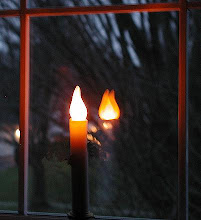La Grande Bellezza
We saw this film Sunday past at The Detroit Film Theater (DFT) located at the Detroit Institute Of Arts (DIA).
It was a cold day, with a wind just enough to chill you, but not enough to freeze the slush on the streets. Part of John R street had collapsed behind the DIA; crews were there working. The men were heavily layered and moved like Morlocks with safety vests on. The flaps of the head warmers they wore beneath their hard hats blew back and forth in the wind, slapping their faces, as if the wind itself and the ninja-star-snowflakes it threw at everyone were not enough.
The Scarab Club stood silent and dark, not at all unlike the ironic and dystopic face of the idol that was mounted above the temple where Rod Taylor's time chariot was stored in the film The Time Machine, being an icon so inscrutable and shadowed that one could not foresee whether it be benign or malign... or both, a Kali-like deity of the winter landscape.
The DFT had been re-done. My friend said that they re-gilt the interior golds, which are everywhere according to the roccoco style of the period when the great limestone pile was put up, and I said - in my usual way - that that was the billion that broke the exchequer of the City of Detroit.
(I don't suppose any city money was used in the work; it probably came from DIA endowment funds, or at least funds augmented by the suburbs taxes.)
Once the film began, I immediately thought of Fellini and La Dolce Vita. It was pretty obvious that was the intended effect. It was a phenomenon referred to these days as an homage.
And I concur in this practice of homage. In fact, I have found myself indulging in extensive homages when I write. It used to be called plagiarism, and was troublesome. Now it is a French word, and va bien.
If I take to a life of white-collar crime and counterfeit currency , then when apprehended by the police and questioned, I shall say it is a bagatelle, a mere case of faux-monnayage and I was only indulging in an extended homage to le roman d'André Gide.)
I do not sit well for long periods of time, especially in theater seats that were made for folks that were not so vast athwart the beam, as it were; for beings of lesser girth than we; Procrustean seats into which we are thrust and twisted into unnatural poses... I usually come out of movie theaters looking like some metal work by Max Ernst:
I was in agony for the first 30 minutes or so. I was thinking "Fellini rip-off!", the word homage having fallen out of my vocabulary as my distress mounted.
Then everything changed. I became enchanted.
The montage of Fellini images pointed to the fact that not much had changed in our society in the years since La Dolce Vita; we were still a group of shallow blokes looking for a one-night stand and booze, drugs, and the latest dance craze.
The Fellini homages were a flashback, and a very effective one, I should say.
The color was stunning. I had gotten used to film color that was dull, insipid, and dark; rather as if every film were Underworld: Extinction and dealt with the brutish ways of vampires and their natural-born enemies, the werewolves.
This film has amazing color.
And its use is well controlled. The only vast space of neon is a large Martini sign on the skyline as seen from the digs of the main character. What a relief that is from the Conceits Of Tokyo: the Bladerunner-ish forests of neon who fill the night by emptying it.
A character named Sister Maria is the focus of the end of the film, and she sums up everything when asked for an interview.
I took a vow of poverty.And this Sister Maria is even more, for as we watch the corybantic and frenzied activity of the upper classes of Rome, we probably feel we are not really part of that shallow existence. But, when we see Sister Maria, we see her to resemble Mother Theresa closely.
You do not talk about poverty; you live it.
This draws us in, for we all have an opinion about Mother Theresa. We have become one with the story now; we did not feel as one with the revellers who party each and every night, but we do have beliefs and judgements about people in the news, and Mother Theresa is the bait which draws us into the trap of enchantment.
And drawn in we most certainly are, for when at last Sister Maria speaks, we are anticipating her to mouth nonsensical platitudes about supernatural beings at best, and to droll inanely at worst.
We anticipate this, because we - although we do not dance all night and sleep all day - we are prisoners of our unexplored, unexamined, and unstudied lives.
We have the illusions of belief which cause us to see Sister Maria as a mimic of Mother Theresa, and we are lead by those illusions to expect her to say that which we have already heard and already accepted or dismissed.
Surprise!
The film was 2 1/2 hours long, and I anticipated at the beginning that I would be leaving on a stretcher. However, the pain was eclipsed by The Great Beauty!
--




















No comments:
Post a Comment